
Get The Perfect Garden Texture With Decorative Grasses
Published: 24/01/2023 | Updated: 31/05/2023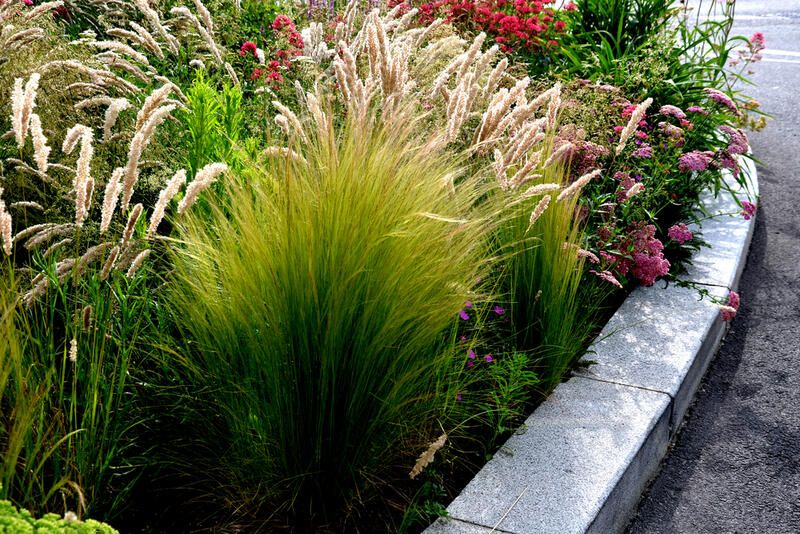
In all honesty, maintaining a summer garden plant in a hot area is rarely as picturesque as we might think. It takes effort. Fortunately, there is a low-maintenance option that will let you relax in the shade while drinking cocktails and taking in your carefully designed landscape: grasses.


Any type of garden would benefit greatly from the addition of ornamental grass.
Need something to liven up your rock garden or add some edge to your garden path? Or maybe you need something to add height to a lightweight screen or fillers for your cherished container garden. There is a beautiful grass type out there for any requirement.
Ornamental gardens are not only beautiful, but they are also simple to maintain. Plant, then take a seat, unwind, and savor the summer as it was intended to be.
Types of Ornamental Grasses
True grasses and plants that resemble grass, such as sedges, that are utilized for comparable reasons in gardens are both referred to as ornamental grasses. The majority of ornamental grasses are perennials, lasting two years or longer. Because of their natural growth habits or the fact that they are not hardy in our area, annual grasses only have one growing season.
Grasses either clump or stretch out in their growth patterns. Spreading grasses quickly spread through either above- or below-ground stems. Spreading grasses must be planted with caution since they could supplant attractive plantings. The diameter of clumping or bunching grasses gradually increases. The majority of ornamental grasses grown in the South are either warm- or cool-season plants.
The new growth of cool-season grasses starts in the fall or winter and blooms in the spring or early summer. In the heat of the summer, they will either become dormant or lose their appearance. Warm-season growers make up the majority of ornamental grasses for the South. In the spring and summer, they grow quickly, blossom in the late summer or early fall, then remain dormant all through the winter.
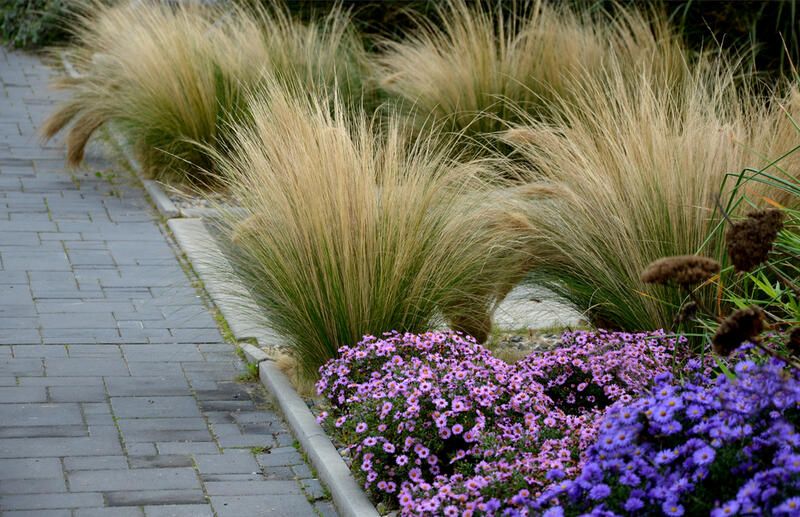
Low Maintenance Grasses
The finest blooms can be complemented by ornamental grasses, or they can stand alone as a focal point in the landscape. Native grass is the foundation of habitat gardens because they give birds and pollinators food and a place to live. Grass adds year-round appeal in all four seasons and is simple to produce and maintain. In addition to native Switchgrass and Little Bluestem Grass, our assortment also includes upright Feather Reed Grass, lovely Fountain Grass, lovely Miscanthus Grass, tall Pampas Grass, and long Pampas Grass.
Ornamental Grass Features
Many types of grasses have exceptionally spectacular bloom heads. Size, color, and texture all differ among flowers. Flowers and seed heads can remain for several weeks or months, and numerous types add interest all winter long.
With a variety of fine to coarse textured leaf blades, softly arching or erect shapes, and deep green, blue, red or purple, yellow, or variegated leaf hues, the foliage adds additional interest. Many types of grass have attractive fall colors, turning golden yellow, orange, crimson, or purple before wintertime fading to tan or straw tones.
In ways that few other plants can, grasses also add interest to the garden. They are easily moved by the wind, giving the scenery the attractiveness of motion and rustling sounds. The seasonal appeal is increased by their quick growth and fluctuating look throughout the year.
Height
The height of ornamental grasses can range from low-growing ground cover grasses to those that can grow up to 15 feet tall. The shapes of grass can range from small mounds to tall verticals and fountains.
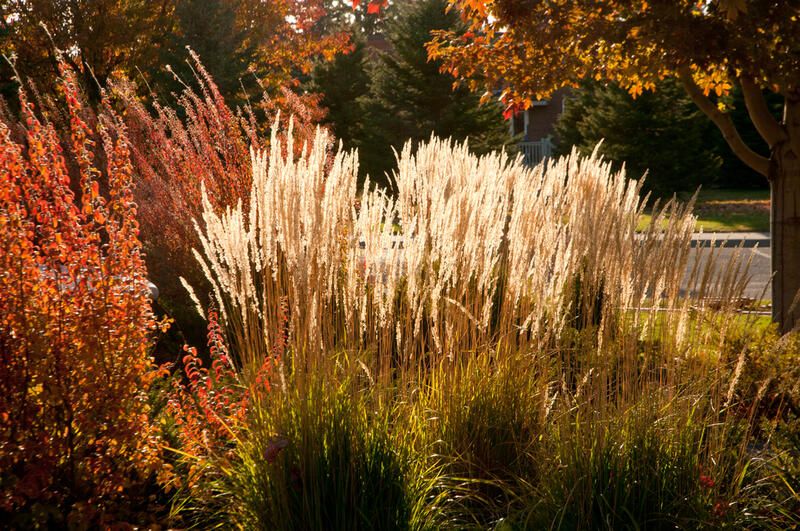
Landscape Usage
Grasses can be used for a wide range of landscape applications because they are such a diverse bunch. Accent plants might be grasses with a distinctive growth pattern, foliage color, or flowers. They can be used in perennial borders, as a stand-in for smaller shrubs, and as container plants. Some grasses can anchor slope soils in bulk, preventing erosion (also known as erosion control).
Growing Conditions
Although there are many different species of grass, they almost all have certain common tastes. The majority of ornamental grasses require full sun and well-drained soil. Being drought tolerant is a trait of established grasses that love the sun. Raised beds will help to ensure proper drainage when they are planted there. The majority of grasses do well in regular garden soil. Some sedges and rushes that resemble grass will flourish in moist or even wet soil.
In partial to complete shade, a small number of grasses and plants that resemble grass will thrive. Sedges, Japanese forest grass, and northern sea oat grass are a few types of grass that can tolerate shadow.
Planting
Warm-season ornamental grass performs best when planted in spring, even though many perennials in South Carolina prefer planting in the fall. Fall is a good time to grow cool-season grasses. Plant grasses as far apart as their eventual height will be.
The majority of decorative or designer grasses are cultivated in pots. If plants are pot-bound, separate the roots from the root ball's bottom and sides. Grass kind affects how the soil is prepared. While certain grasses will not grow well in improved soils, some will, others will. Knowing what each variety of grass needs is crucial for planting it successfully. To prevent air pockets, firm the soil around the plant's roots as you spread out its roots and re-fill the planting hole. Make sure the plant's crown, which is the intersection of its roots and top, is level with the soil. Maintaining the soil's level at that of the container is a good rule to follow.
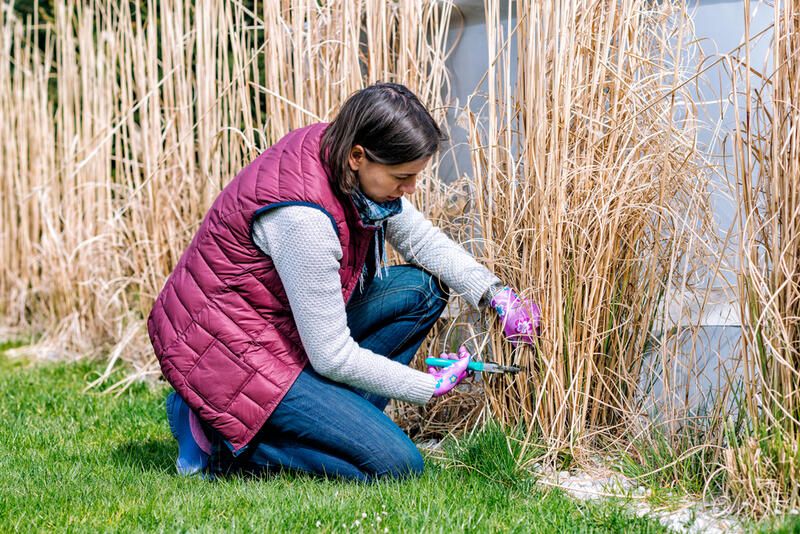
Common Problems
Few insects or diseases affect ornamental grasses. Some cool-season grasses are occasionally harmed by rust, but most plants bounce back rapidly after being pruned. Occasionally, anthracnose can be a concern. Plants with poor growing conditions, such as those with little light, poor air circulation, or excessive fertilization, are more likely to contract diseases.
Pro tip: Try to go for perennial ornamental grasses or perennial grass that are grass-like plants native to your area.
A few non-native grass types, namely those that run or spawn profusely, can become pests if planted in the incorrect area. Constrict the root system of flowing grasses in a deep, bottomless container to prevent them from spreading out of control. Use caution while using aggressively seeding non-native grasses, especially when they are close to natural or wetland regions.
Maintenance
Watering
Once established, moisture requirements depend on the type of soil, grass species, temperature, and other elements. With at least 1 inch of water each week from rain or irrigation, the majority of ornamental grasses will grow most effectively. Using drip irrigation to water grasslands is highly recommended. It conserves water and lowers the risk of foliar diseases by supplying water directly to the roots.
Fertilization
The majority of ornamental grasses require minimal fertilizer. For best outcomes, all fertilizer treatments should be based on the findings of a soil test. A surplus of nitrogen in the soil can increase the risk of illness, promote excessive growth, and weaken the stems, causing the grass to topple over.
Dividing
Every three to four years, most grasses need to be divided. Ornamental grasses will eventually become slender or die out in the middle if they are not separated. Divide grasses while they are still manageable in size. It might be quite tough to dig up and separate overgrown grasses.
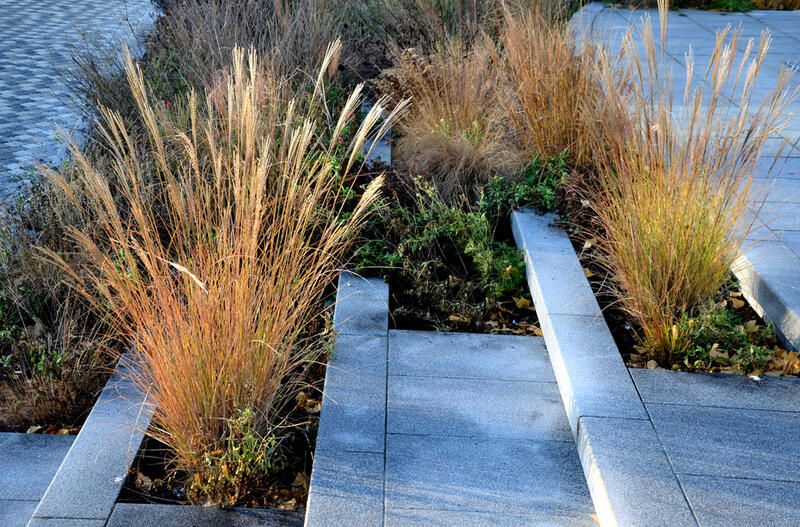
Cutting Back
Before the next season's growth begins, trim back grass. Cutting back grass is typically done in late winter or early spring because many types of grass look beautiful in the garden during the winter. For the greatest appearance, trim stems to a few inches above the surface. Grass can be trimmed in a variety of ways. By hand, using pruners or hedge shears, electric hedge shears, or a weed eater with a brush-cutting blade, they can be reduced in size.
Some evergreen grasses, such as sedges (Carex) and sweet flag (Acorus), take longer to recover after being pruned. In the spring, use gloves to comb the foliage of these plants to get rid of any fallen leaves.
Different Types of Ornamental Grass Usage
Native Grass for Drier Landscapes
Grasses can be used in formal gardens, natural landscapes, plains, and meadows, among other sorts of settings. Native grasses give gardens a feeling of location. A succession of many grass species was discovered by settlers traveling from east to west. Gardeners can learn more about the cultural needs of native grasses by examining this succession and the variations in temperature and soil.
The tall grass prairie is found in the eastern portion of the Midwest, sometimes referred to as the Corn Belt. This area's grass can grow as tall as a person or higher. The temperature is more humid, more consistently moist soil, and the soil is very organic. Big bluestem (Andropogon gerardii), switch grass (Panicum virgatum), and Indian grass are the dominant grasses (Sorghastrum nutans). This area receives 25 to 30 inches or more of rain on average.
Colorado's Front Range and Eastern Plains are a section of the short-grass prairie that is located in the Rocky Mountains rain shadow. The buffalo grass (Buchloe dactyloides), the state grass of Colorado, and blue grama (Bouteloua gracilis), which is only an inch tall, predominate in this high-dry steppe climate. The region is semiarid, and there are 10 to 15 inches of rain on average per year.
The Front Range and Eastern Plains of Colorado are a portion of the short-grass prairie situated in the rain shadow of the Rocky Mountains. In this high-dry steppe climate, the buffalo grass (Buchloe dactyloides), the state grass of Colorado, and the one-inch-tall blue grama (Bouteloua gracilis) predominate. The area is semiarid, and the annual rainfall ranges from 10 to 15 inches.
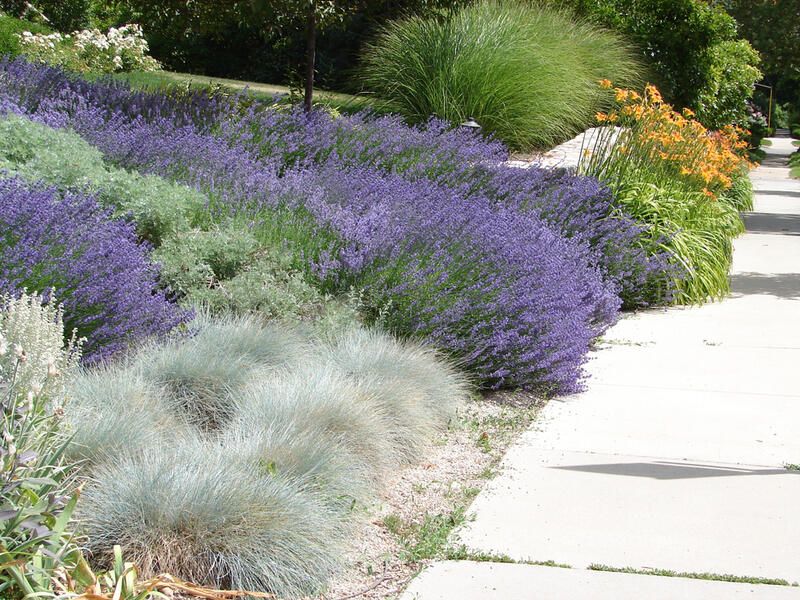
Grasses for Moist Soil
In American gardens, grasses from various parts of the world are frequently employed. Many of these originate from humid regions of Asia and Europe and require liberal watering. In semi-arid climates, some natural plants like switch grass (Panicum virgatum) also need routine irrigation.
The numerous kinds of Maiden grass (Miscanthus species) are some of the most popular Asian grass introductions. Some have been grown in America for a century and are still highly popular, like variegated Japanese silver grass. Maiden grass-like silky flower tassels on miscanthus plants are renowned for remaining through the winter. To get flowers that appear well above the foliage, early flowering, and plants that don't topple over, new types have been developed. Morning Light, one of the more recent cultivars, is quickly growing in appeal.
Other grasses are still seeing new types introduced. A non-flowering form of tufted hair grass with cream, white, and pink variegated leaves is called "Northern Lights" (Deschampsia cespitosa).
One of the most eye-catching and well-liked grasses is feather reed grass (Calamagrostis x acutiflora 'Karl Foerster'), which resembles wheat in appearance. It forms upright clusters that add a vertical accent. The erect, emerald-green flower spikes appear in May to June, turn golden in color, then turn tan, and last into the winter.
These grasses, which are known for tolerating shade, include Korean feather reed grass, tufted hair grass, and Northern Sea oats (Chasmanthium latifolium) (Calamagrostis brachytricha).
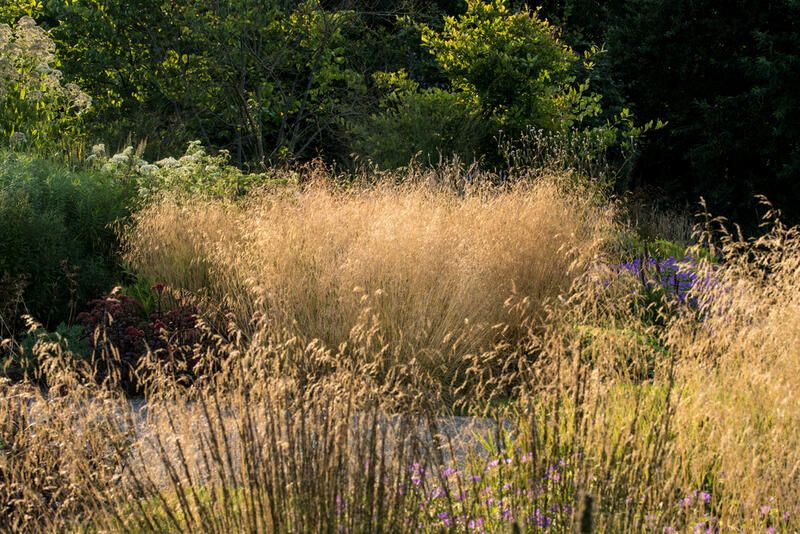
Types of Ornamental Grasses
Feather Reed Grass
Feather reed grass, the most widely used ornamental grass, has a distinctive erect form and beautiful winter foliage. Like many kinds of grass, this hardy plant can withstand a variety of environmental factors.
-
Name: "Karl Foerster" Calamagrostis
-
Full sun and well-drained soils are ideal for growing plants.:
-
Height: up to 6 feet tall
-
USDA Hardiness Zones: 5-9
Blue Oat Grass
It's difficult to top blue oat grass as a low-maintenance plant with a steel-blue hue. Additionally, it doesn't expand and engulf your garden and has a neat, mounded habit.
-
Name: Helictotrichon sempervirens
-
Full sun and well-drained soil are ideal for growing plants.
-
Height: up to 4 feet tall
-
Zones: 4-9
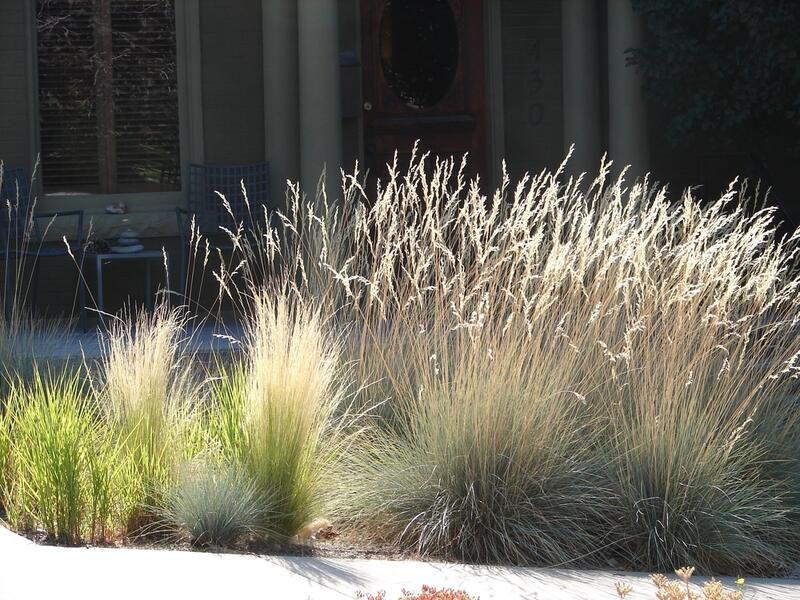
Japanese Forest Grass
Japanese forest grass is a good low-growing plant with an almost ideal mounding habit. The vividly colorful foliage of variegated choices (like "Aureola" or "All Gold") brightens shadowy areas.
-
Name: 'Aureola' Hakonechloa macra
-
Growing conditions include soil that drains well and some shade.
-
Height: up to one-two foot tall
-
Zones: 5-9
Blue Fescue
Blue fescue is a short grass with powder-blue leaves that grows in neat, miniature mounds, making it ideal for edging or as a groundcover.
-
Names: Festivaluca glauca 'blue fescue'
-
Growing conditions include well-drained soil, full sun, or partial shade.
-
Height: up to one-two foot tall
-
Zones: 4-8
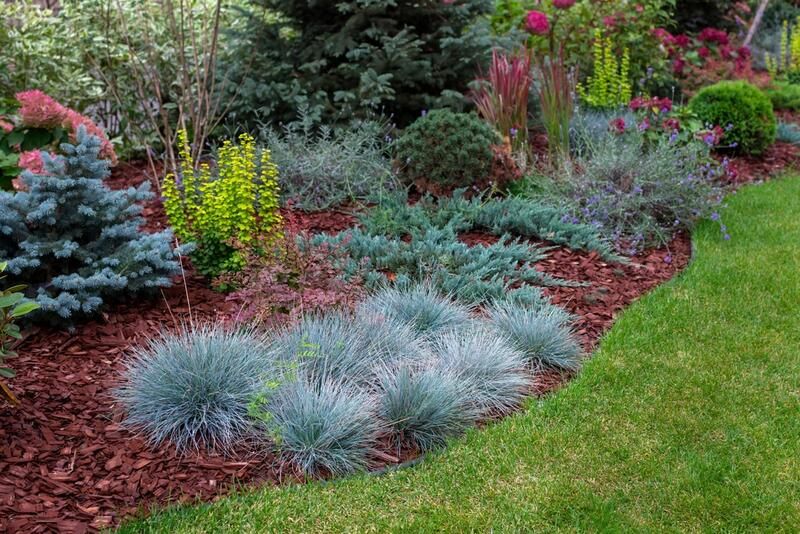
Mexican Feather Grass
Mexican feather grass has delicate flower stalks and slender leaves that dance sweetly in the wind with even the smallest breeze. This lovely grass tolerates dry weather and flourishes on poor soil. It looks great planted in pots or dispersed throughout a slope or meadow. For preventing erosion, Mexican feather grass is a suitable option.
-
Names: Nassella tenuissima
-
Full sun and well-drained soil are ideal for growing plants.
-
Height: up to three feet tall
-
Zones: 6-10
Purple Fountain Grass
Purple fountain grass is a sensitive perennial, a favorite of gardeners around for its burgundy-red foliage all season long, and is frequently used in container gardens.
-
Name: Pennisetum setaceum 'Purpureum' (purple fountain grass)
-
Full sun and well-drained soil are ideal for growing plants.
-
Height: up to three feet tall
-
Zones: 9-10 (grown as an annual in cooler climates)
Northern Sea Oats
For its intriguing seed heads that hang off the stems and resemble wind chimes, this ornamental grass is prized.
Test Garden Tip: Northern Sea oats spread quickly, so plant them in a container or another area where they can be contained.
-
Name: Chasmanthium latifolium
-
Growing conditions include well-drained soil, full sun, or partial shade.
-
Height: up to three feet tall
-
Zones: 5-9
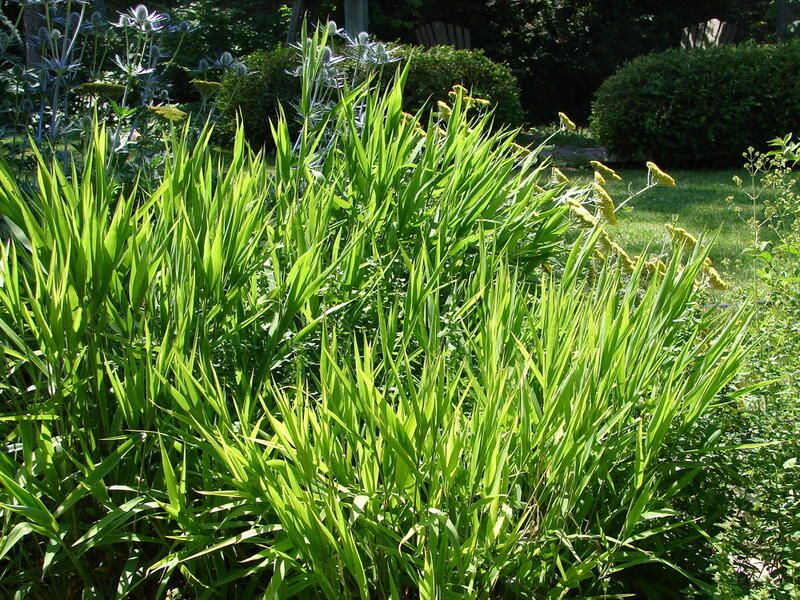
Zebra Grass
The origin of the word "zebra grass" is clear: Several vivid yellow bands can be seen on each leaf blade. In the landscape, the plant shines out! In the perennial border, zebra grass also has a lovely upright habit that looks fantastic.
-
Name: Miscanthus Sinensis 'Strictus'
-
Full sun and moist, well-drained soil are ideal for growing plants.
-
Height: up to 5 feet tall
-
Zones: 4-9
Dwarf Pampas Grass
The magnificent white flower plumes of dwarf pampas grass, which only reaches a height of 4-5 feet, appear in the late summer and early fall. You can enjoy the flower heads all winter long if you use them in the back of the border. Plant the dwarf variety of pampas grass where its roots can't spread since, like the ordinary variety, it can become invasive. It tolerates practically any sort of soil and is resistant to deer and is drought tolerant.
-
Name: Cortaderia selloana 'Pumila'
-
Full sun and well-drained soil are ideal for growing plants.
-
Height: 5 feet tall
-
Zones: 6-10
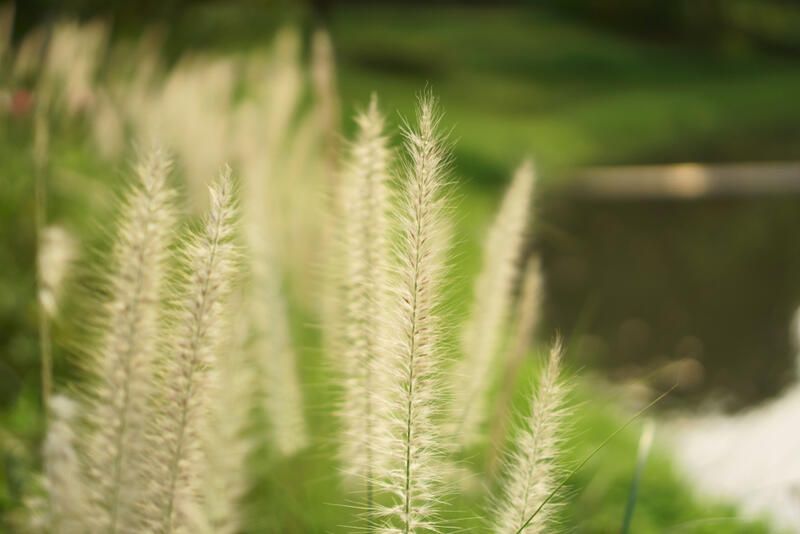
Fountain Grass
Fountain grass is a lovely mounding plant with an elegant shape and soft, feathery plumes that flutter in the breeze.
-
Name: Pennisetum alopecuroides
-
Full sun and well-drained soil are ideal for growing plants.
-
Height: up to 5 feet tall
-
Zones: 5-9
Switch Grass
Native to the prairies of North America, switch grass produces airy plumes in the late summer and early fall. Even during the season, it looks fantastic: During the season, many types (like "Dallas Blues") produce gray-blue foliage that transforms into stunning colors of gold or crimson in the fall.
-
Name: Panicum virgatum
-
Growing conditions include well-drained soil, full sun, or partial shade.
-
Height: up to 5 feet tall
-
Zones: 4-9
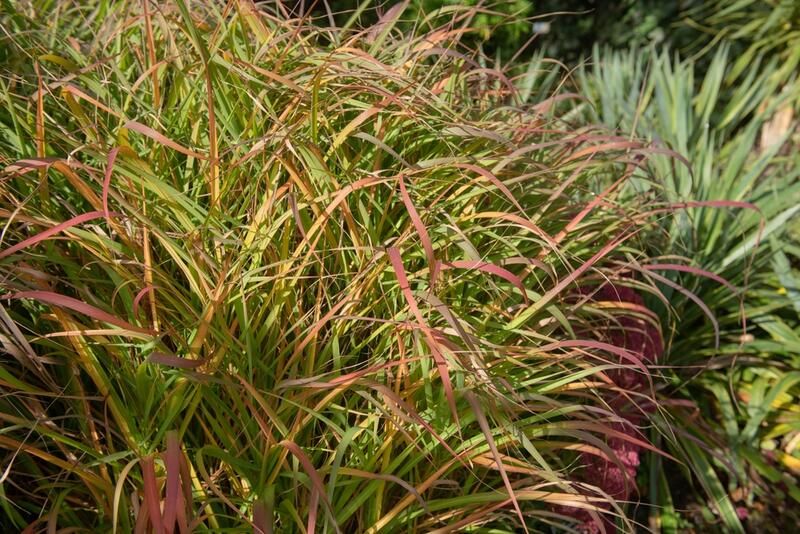
FAQs
Best Time to Plant Ornamental Grasses
Planting time for ornamental grasses should be either early spring or early fall. Your grasses will have plenty of time to create a solid root system if you plant them in the spring before the onset of the winter season. In areas with milder winters, you can wait until August or September to plant; nevertheless, for optimal results, plant at least six to eight weeks before the first frost. To protect your grasses from upcoming chills, you might also wish to cover them lightly with mulch or straw.
Is Ornamental Grass a Perennial or Annual?
The majority of decorative or designer grasses are perennial plants, but some, like purple millet or hare's tail, are annual plants that do best in containers because they only have one growing season. Perennial decorative grass needs less maintenance after they are established than fussier perennial plants (like roses or hydrangeas). In reality, they may look stunning all year long and endure for two or more years with just little maintenance.
When do I Need Professional Advice?
When it comes to designing your landscape with ornamental grass, it can be a bit overwhelming deciding what colors or plants go where. That's where the professionals come in. Using an online professional design service can help you try out a bunch of different options without committing to anything. We would recommend checking out Shrubhub.com for a free plant consultation and top-notch 3D landscaping designs!


